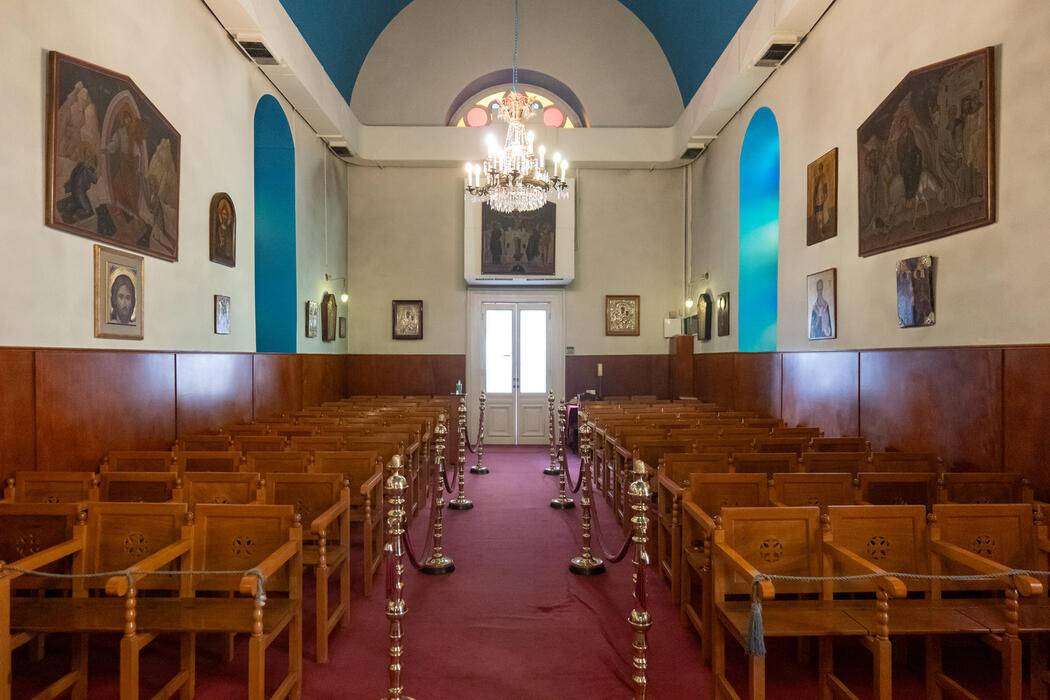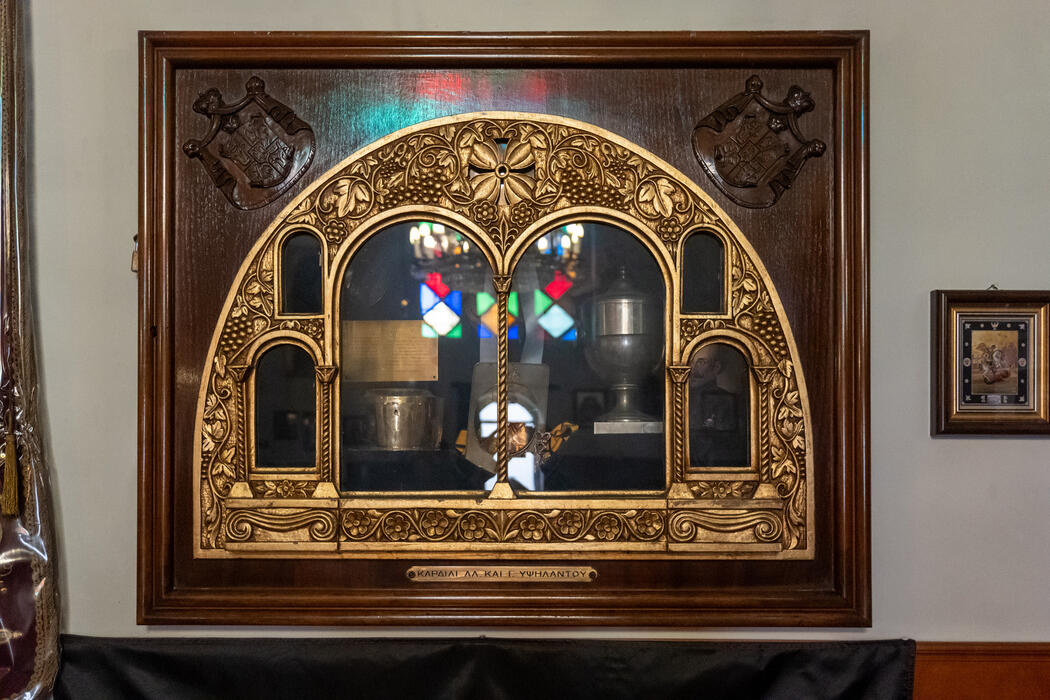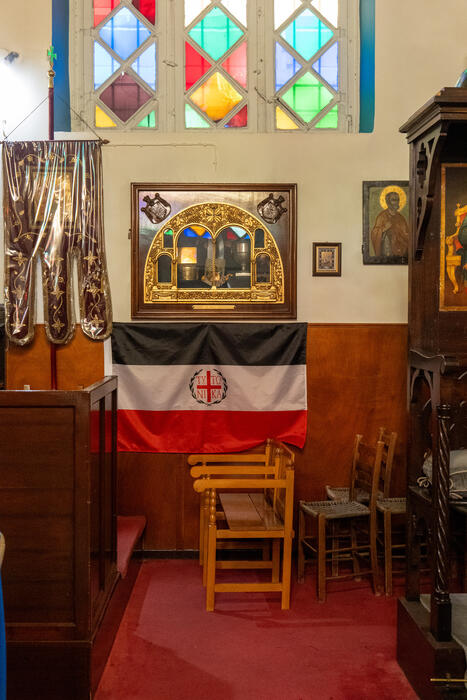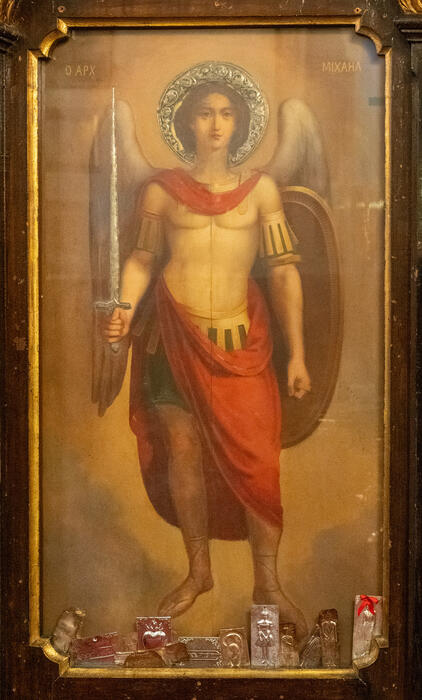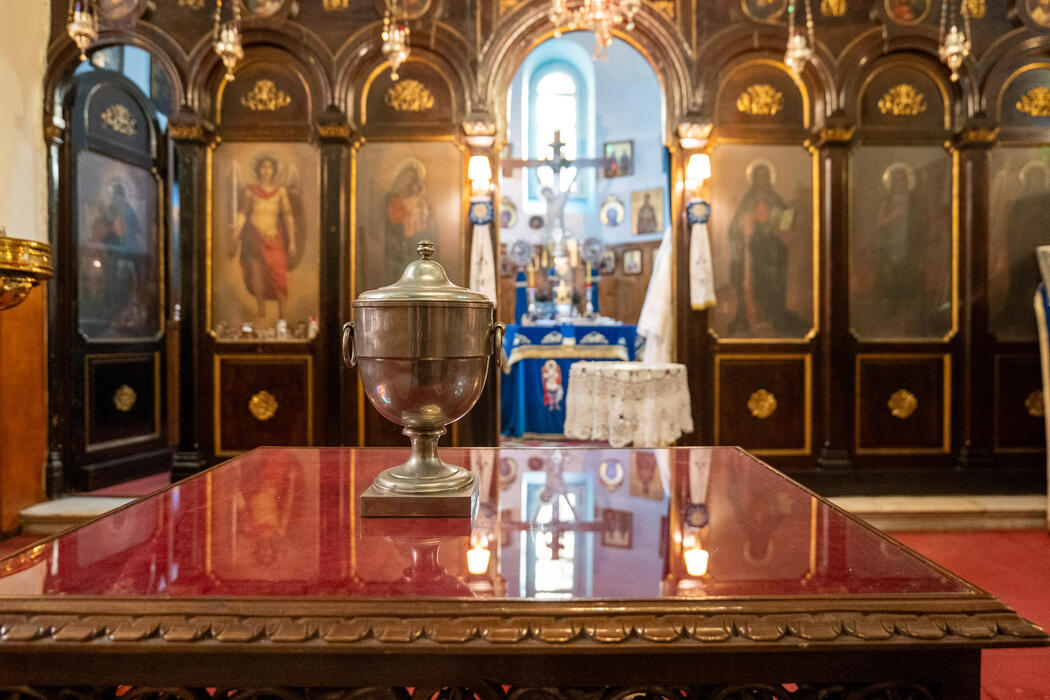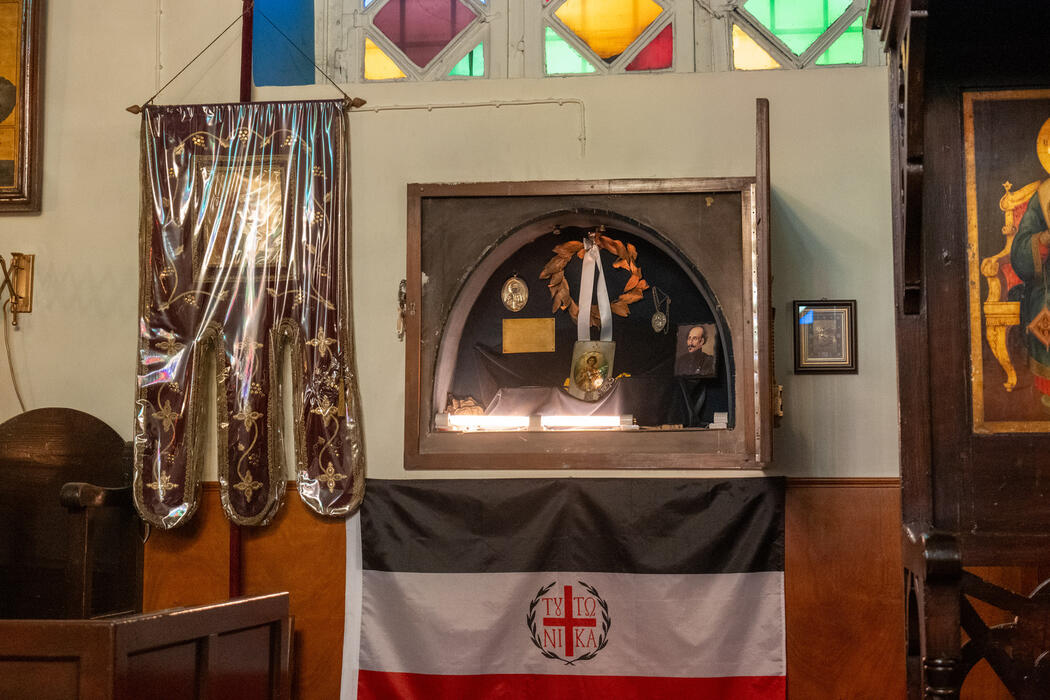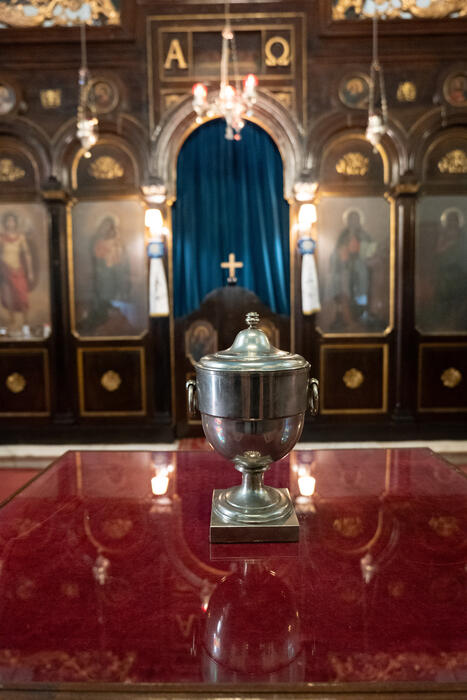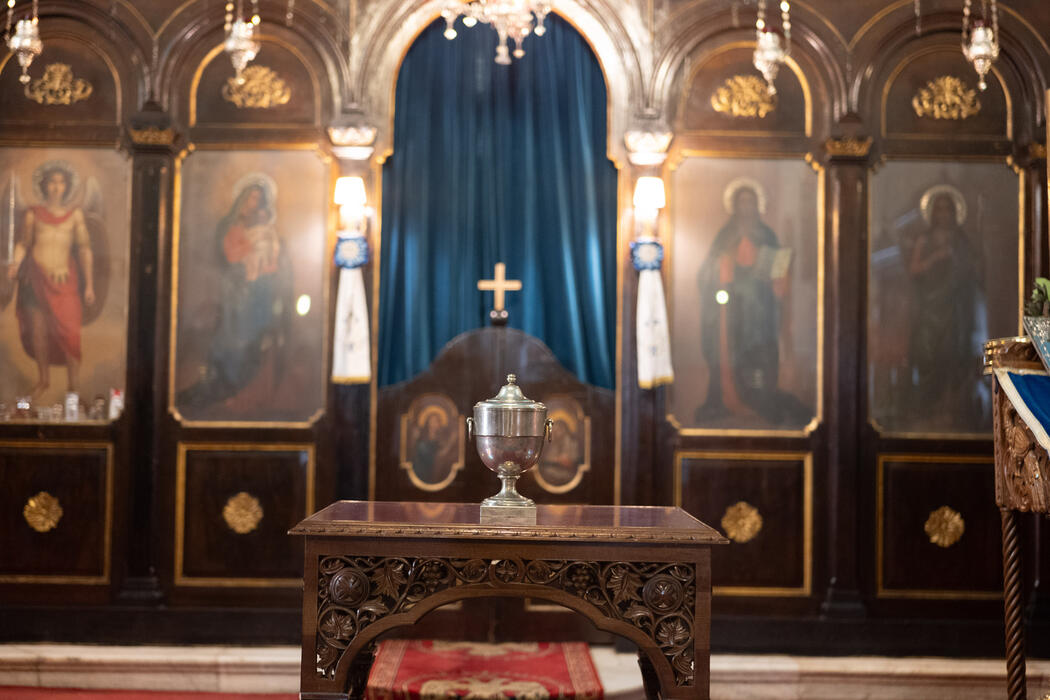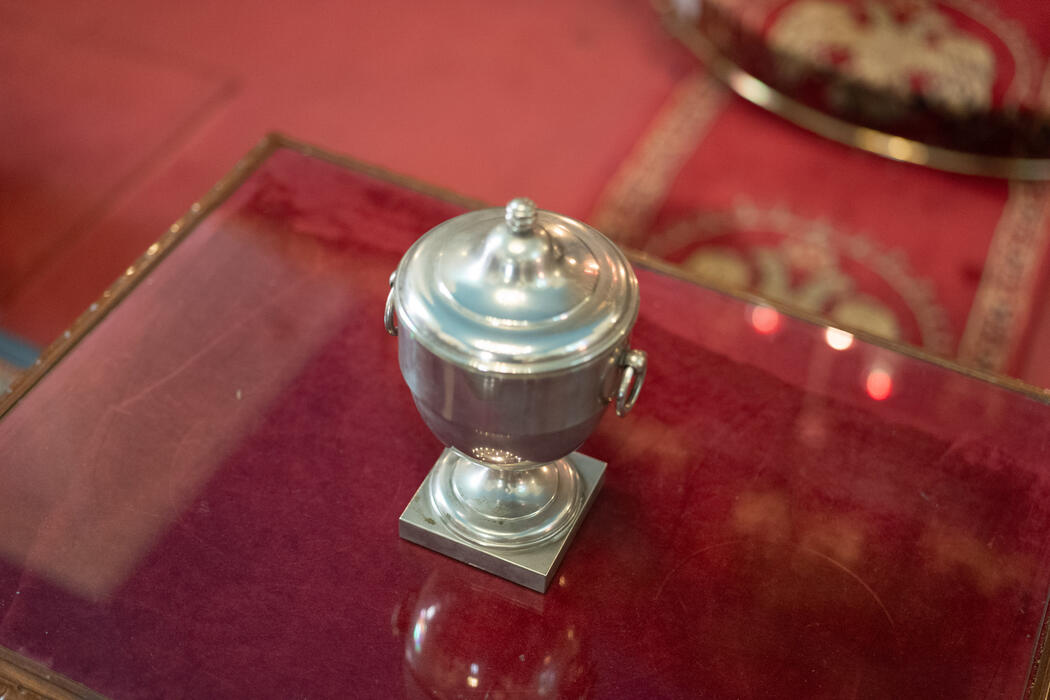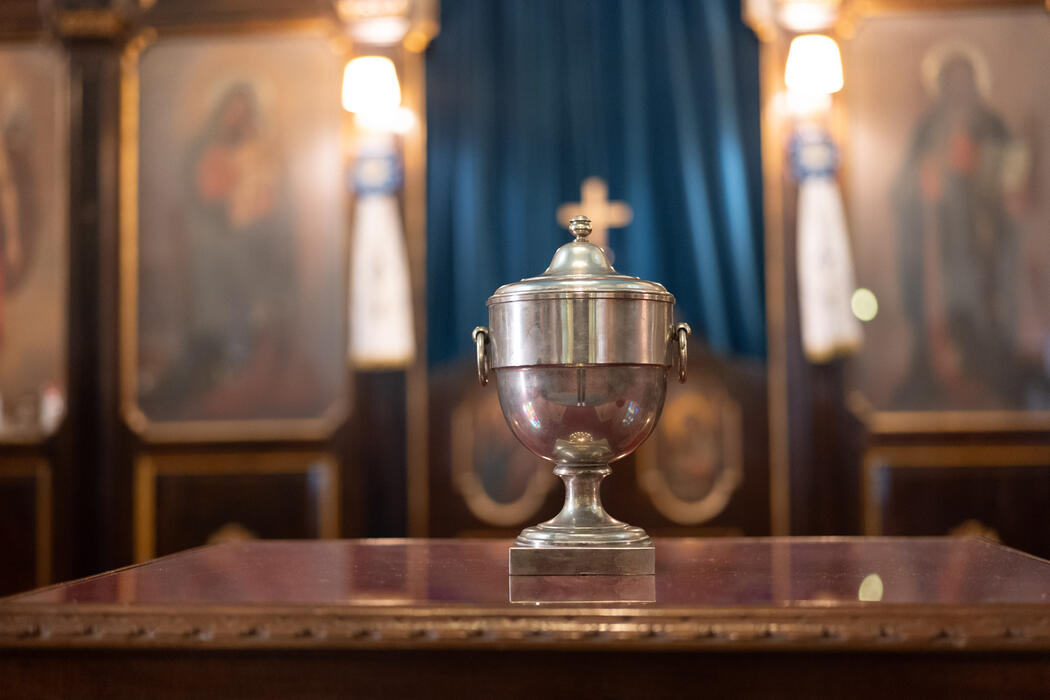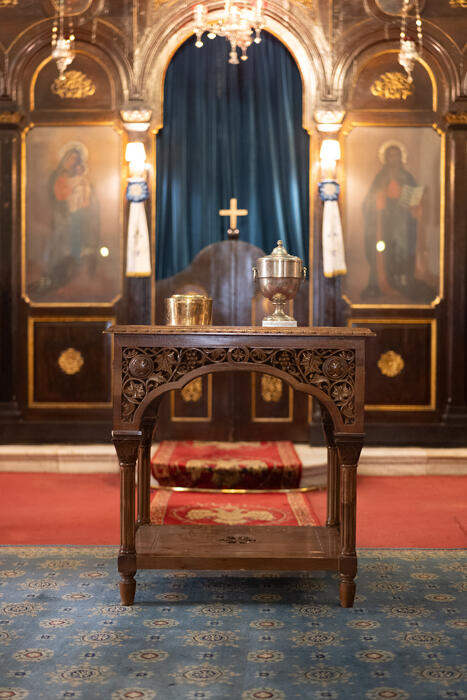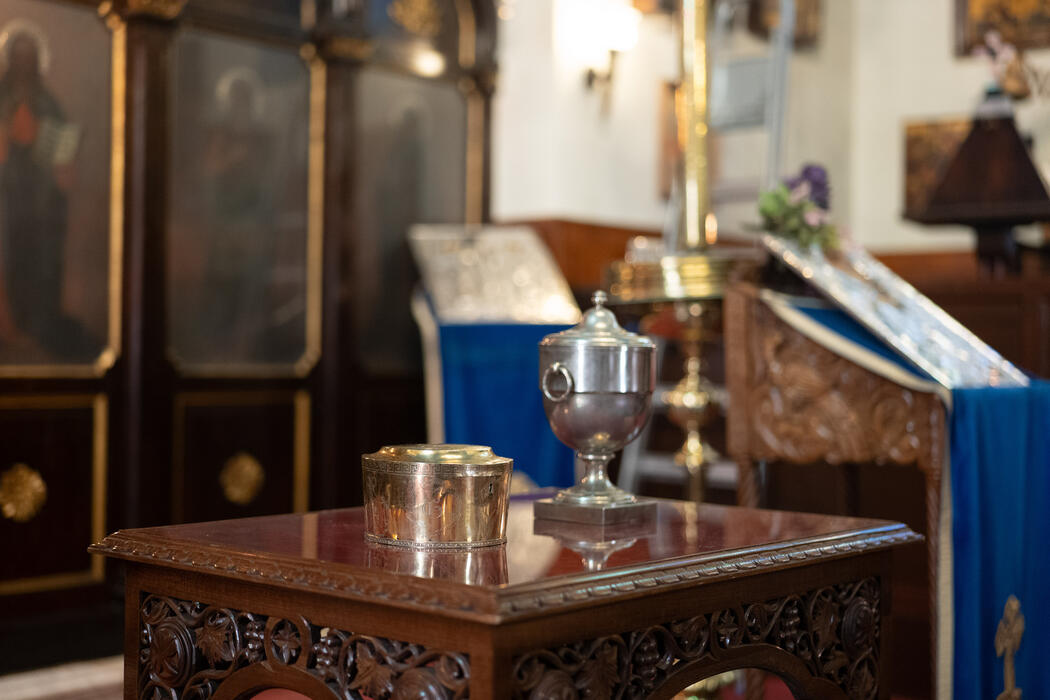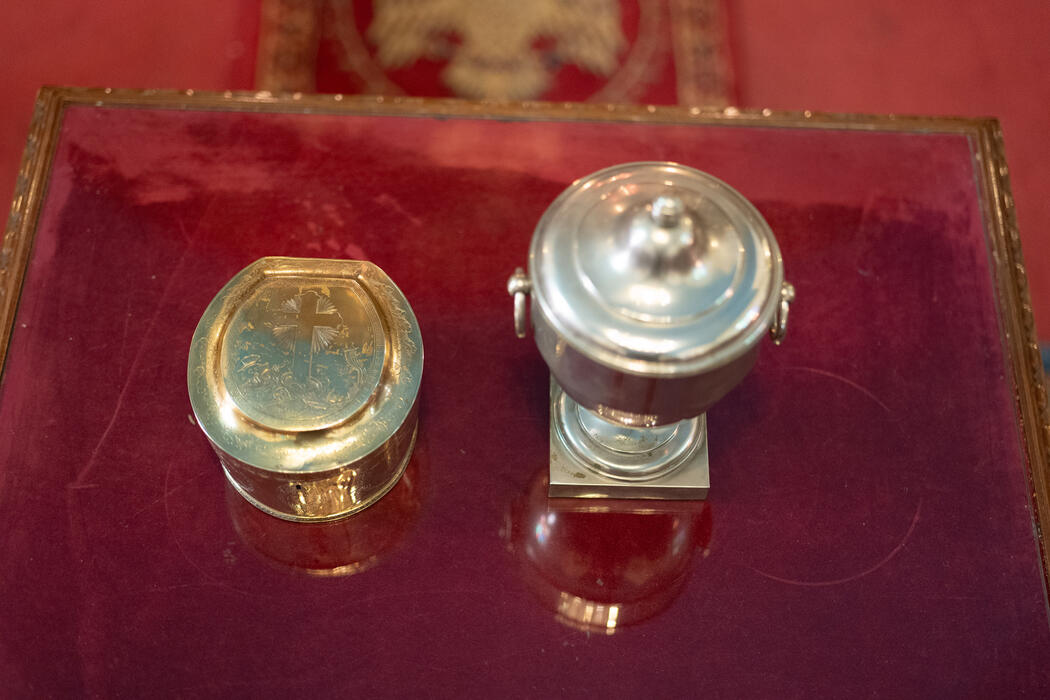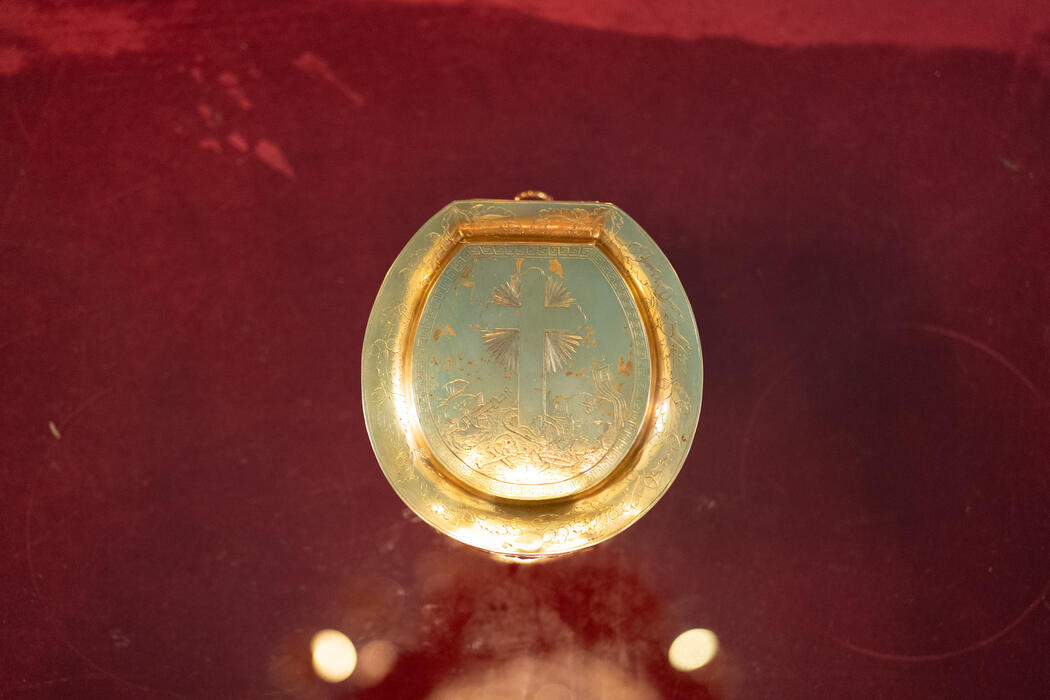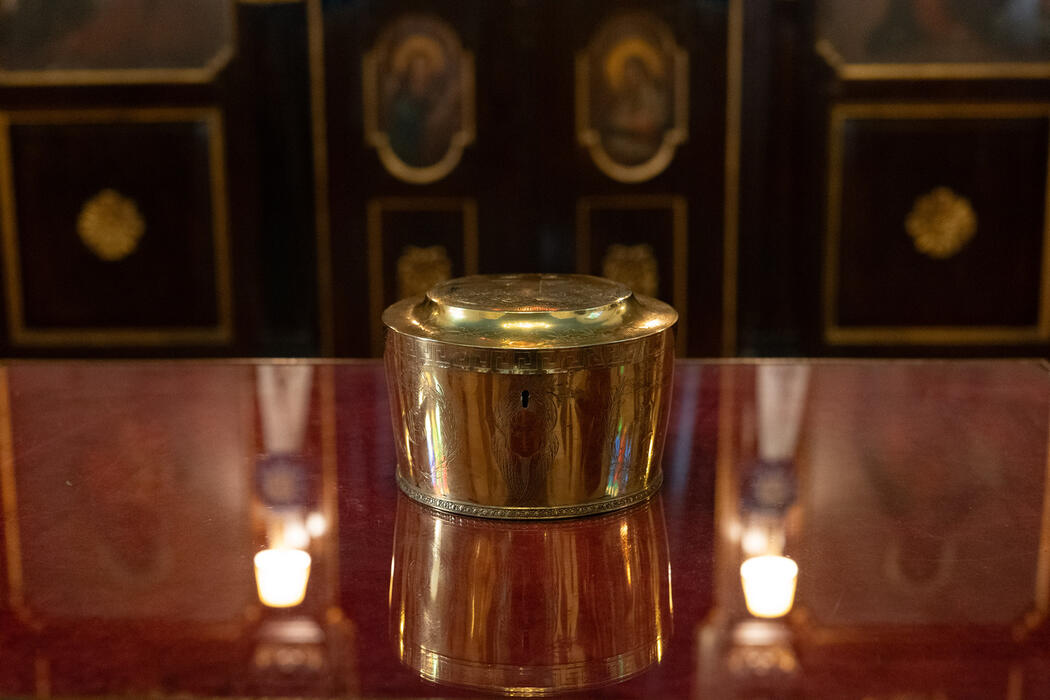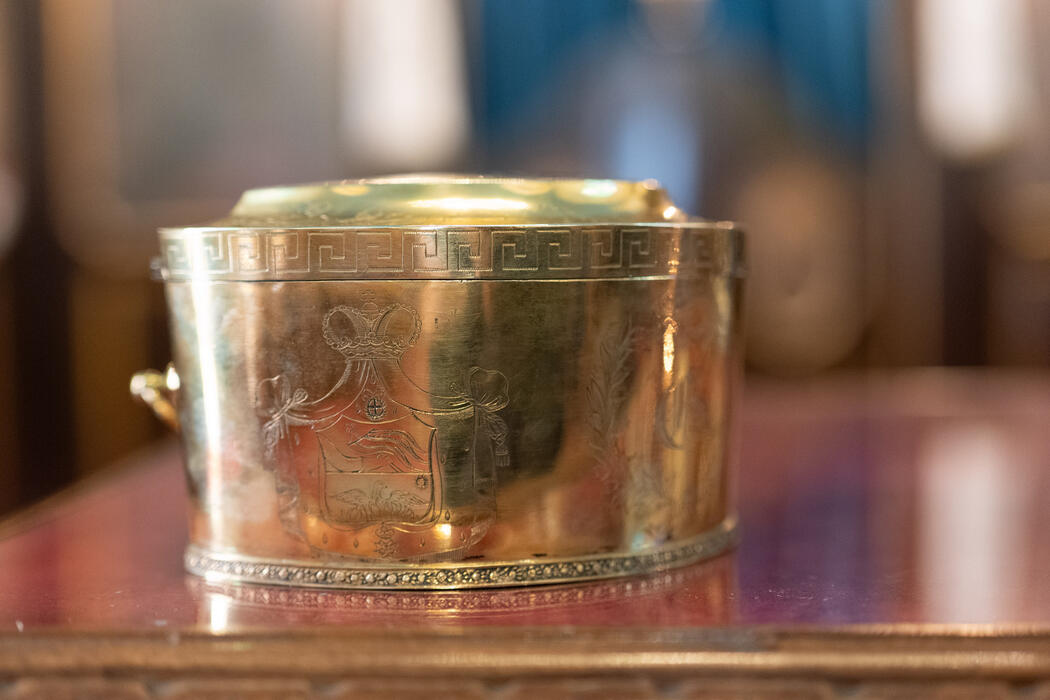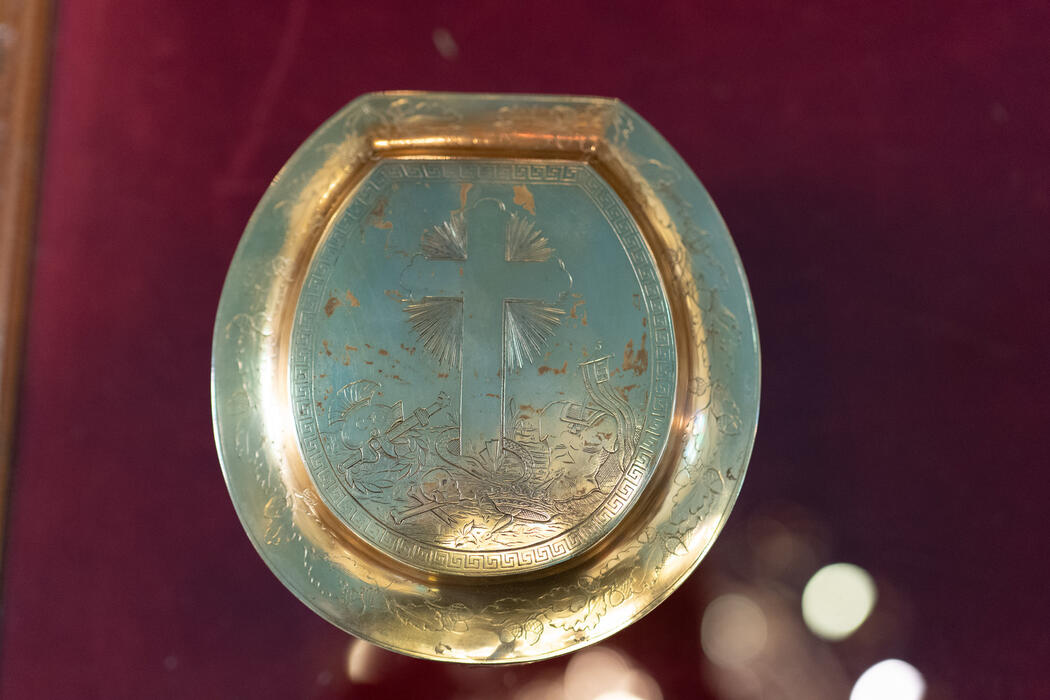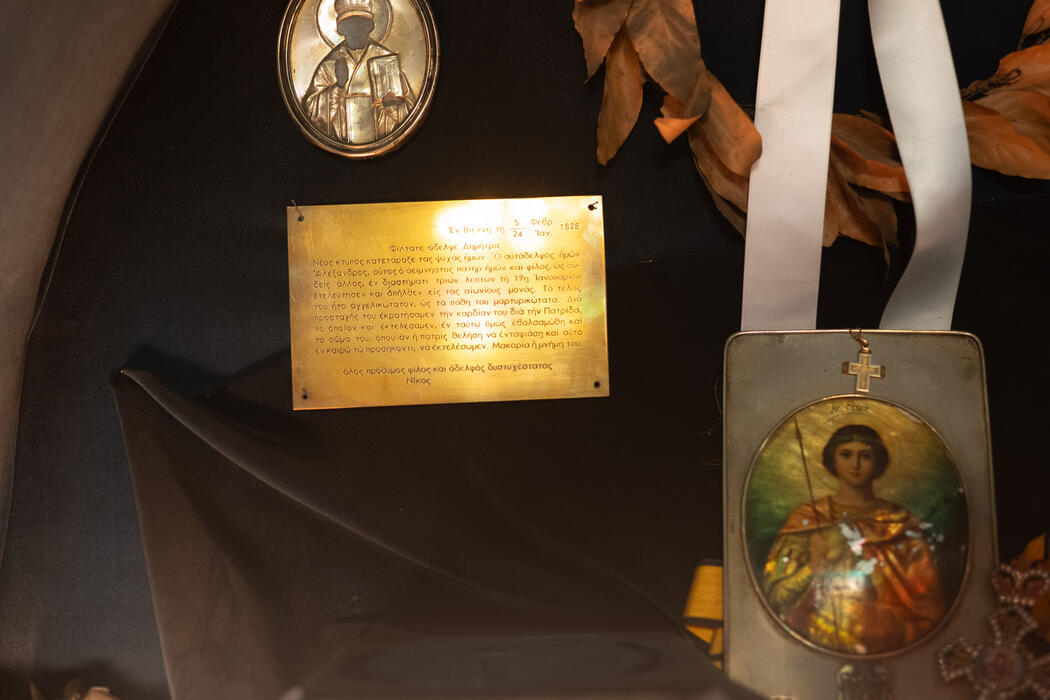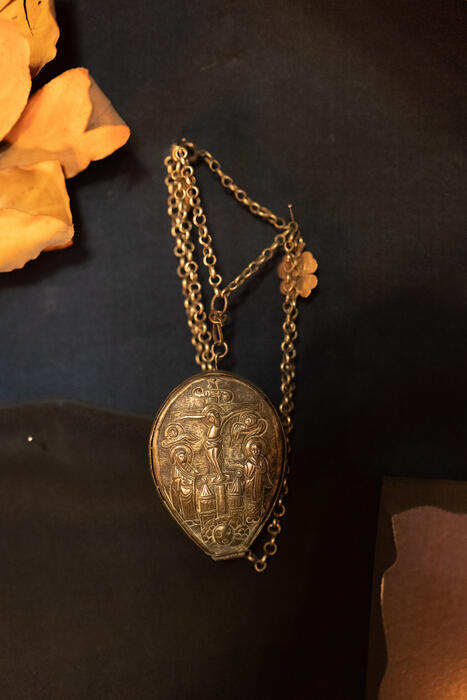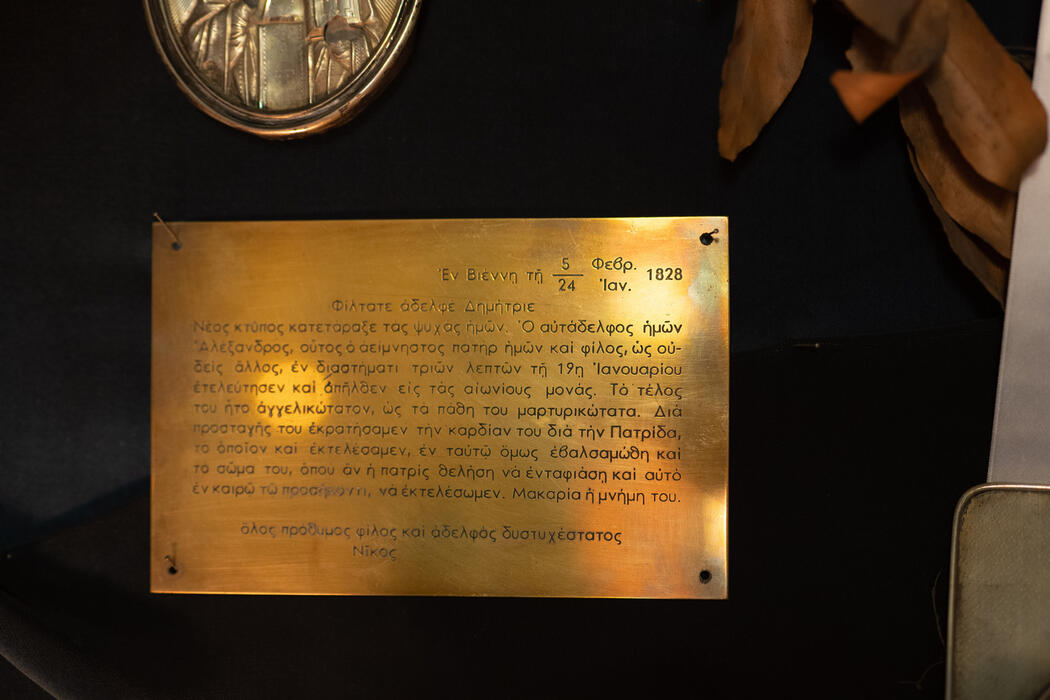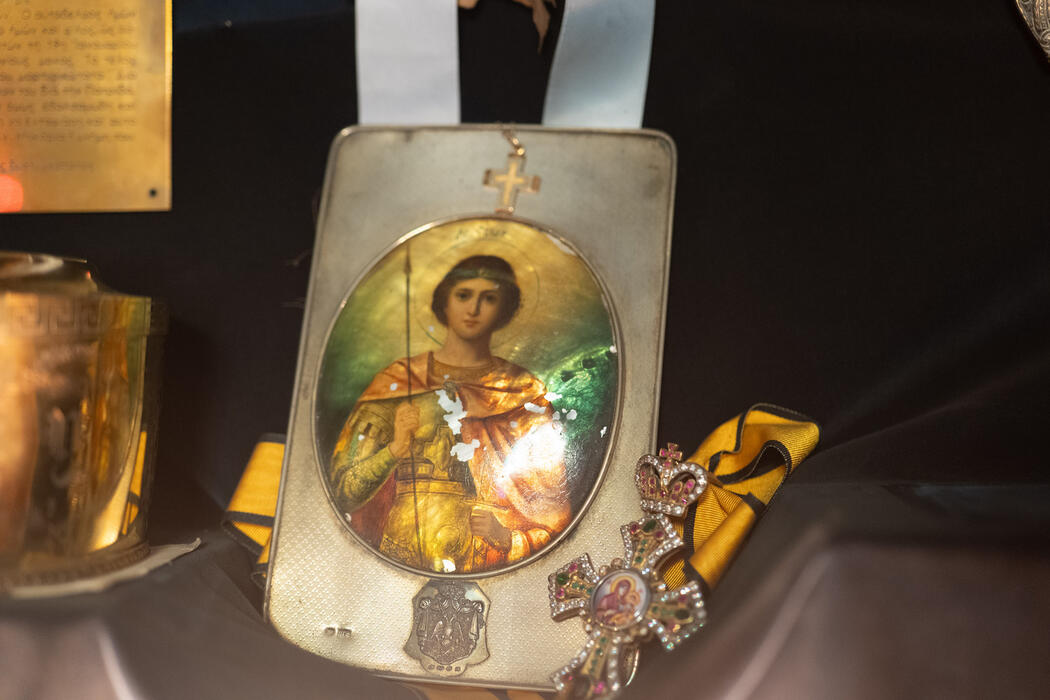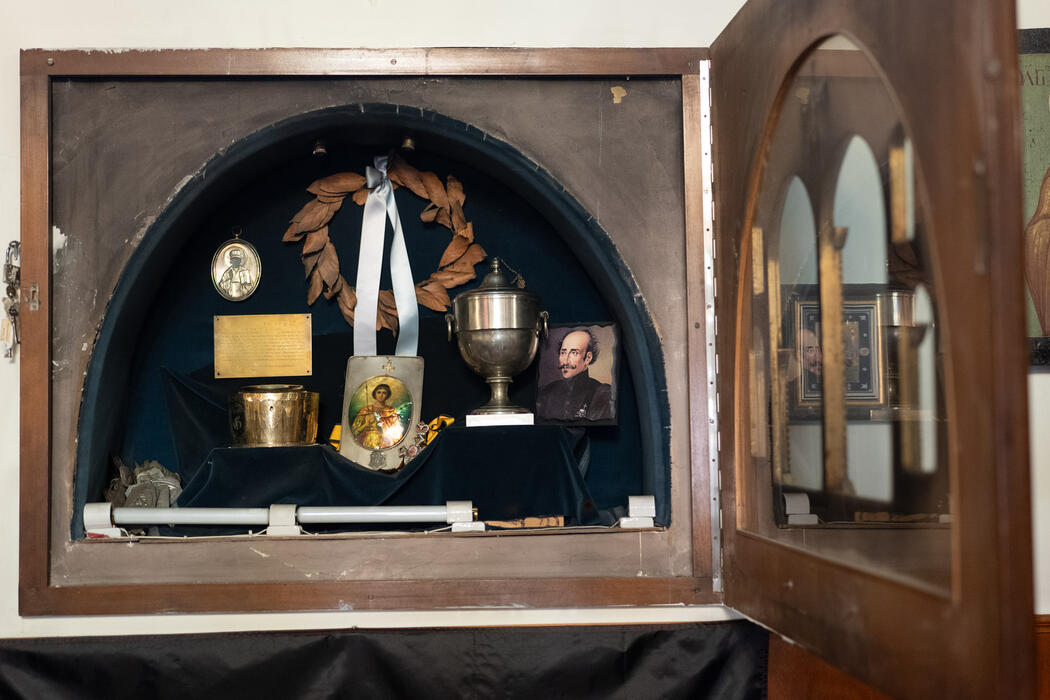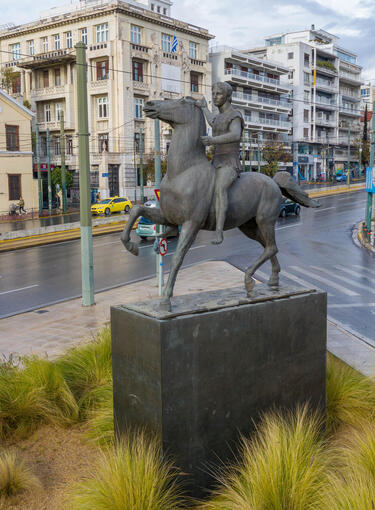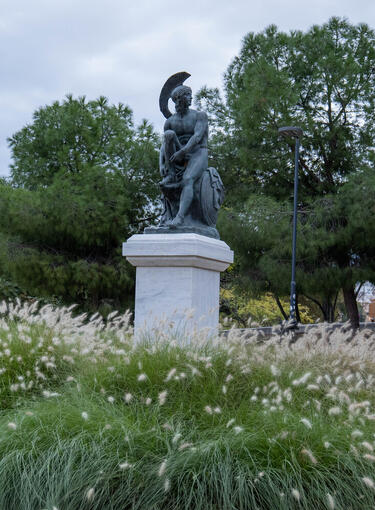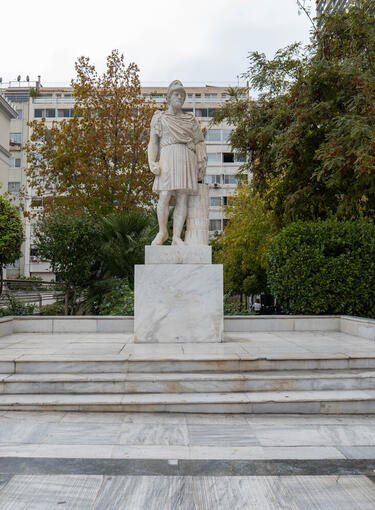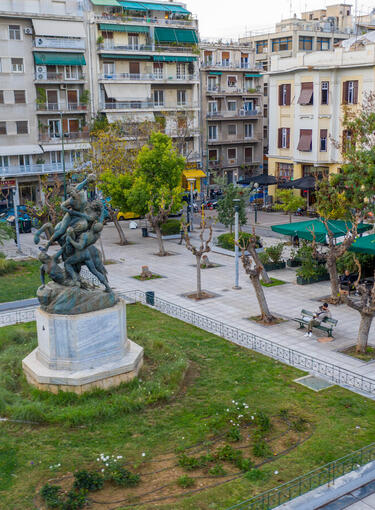Alexandros Ypsilantis, leader of “Filiki Eteria” and military leader of the Revolution in the Danubian Principalities, died in 1828 in Vienna, after many years of imprisonment. His last wish was for his heart to be separated from his body and transferred to Greece. His embalmed heart was indeed kept in the Greek Church of Agios Georgios in Vienna and then, from 1843, in the then Metropolitan Cathedral of Athens, the Church of Agia Irini. In 1859, Maria Ypsilanti, née Mourouzis, made sure that the heart of Aexandros Ypsilantis, along with the heart of his brother and her husband Georgios Ypsilantis, were secretly kept in the Pammegistoi Taxiarches Church. The discovery of the relics was accidental, when the priest Panteleimon Kriezis, who was replacing the sick priest of the church, Nikolaos Mourtzinos, discovered that the wooden cupboard to the left of the altar, inside the sanctuary, was carefully sealed. When he decided to break the lock, he uncovered the two hearts, kept in two elaborate lekythoi, which had been kept in obscurity until then due to the bitterness Maria Ypsilanti felt for the ingratitude that the state and the nation had shown towards her husband and her brother-in-law. It is worth noting that, for years, it was erroneously believed that the second reliquary contained the heart of Dimitrios Ypsilantis, but a careful study of its engraved representations proves that it belonged to Georgios Ypsilantis. Nowadays, the two lekythoi with the hearts of the Ypsilantis brothers are kept in an arched case inside the Temple, along with other relics of the era of the two heroes. The lekythos of Alexandros Ypsilantis is silver and does not bear any decoration. Georgios Ypsilantis' lekythos is silver and gilded and bears rich allegorical decoration. The perimeter is adorned with meander motifs, below which, within laurel wreaths, are the initial letters “G” and “Y”, as well as the coat of arms of the Ypsilantis family and symbols of the Sacred Band. The meanders reappear on the lid, surrounded by a floral motif of oak leaves and fruits. The centre is dominated by a cross, the base of which is enveloped by the body of an ouroboros, a serpent swallowing its tail. On either side there are military symbols, a helmet,a sword and a breastplate with rather Roman typological features, as well as symbols of cosmic vanity (vanitas), a crown and sceptre thrown to the ground and a skull and crossbones (memento mori).
Main Bibliography
- Bury John – Meiggs Russell, A History of Greece. To the Death of Alexander the Great, Translated by Rouli Tataki, K. N. Petropoulos, Anna Papadimitriou - Grammenou, Konstantinos Buraselis, Angelos Matthaiou, Athens 2011.
- Αλεξάνδρου, μτφρ. Ρούλη Τατάκη, Κ. Ν. Πετρόπουλος, Άννα Παπαδημητρίου Γραμμένου,
- Κωνσταντίνος Μπουραζέλης, Άγγελος Ματθαίου, Αθήνα 2011.
- Lefèvre François, Histoire Du Monde Grec Antique, Translated by Anastasia Kefala, Mina Kardamitsa, Athens 2016.
- Καρδαμίτσα, Αθήνα 2016.
- Antonopoulou Zeta, Τα Γλυπτά της Αθήνας: Υπαίθρια Γλυπτική 1834-2004, Athens 2003.
- Karaiskou Vicky, Νεοελληνική Γλυπτική: Ματιές και αναγνώσεις, Athens 2011.
- Pavlopoulos Dimitris, Ζητήματα Νεοελληνικής Γλυπτικής, Athens 1998.
- Γλυπτά, Αθήνα 2020.
- Pavlopoulos Dimitris, Από τον Ιερό Λόχο στον Κωνσταντίνο ΙΒ’: Νεότερα Αθηναϊκά Γλυπτά, Athens 2020.
Main Webliography
http://www.athenssculptures.com
https://explore.cure-project.gr
https://www.thisiscrete.gr/gr/historical-monuments
https://www.wikipedia.org
Informations
Additional
Date: 1859
Location: Pammegistoi Taxiarches Church of the Amalieion Orphanage, 6 Stisichorou
Str., Athens
Type: Lekythoi (funerary vases) with relics
Subject: Greek War of Independence
Access: Church opening hours



